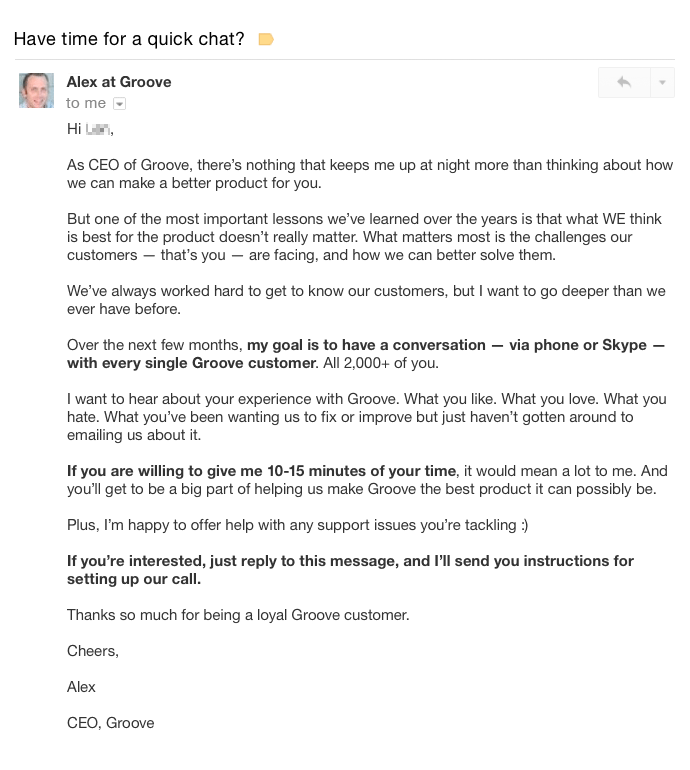More startups Fail from a Lack of Customers than from a Failure of Product Development.
— Steve Blank & Eric Ries. The Customer Development Model.
Defining Customer Development #
Customer Development is a structured framework for discovering and validating business models by identifying customers and viable markets for existing products. Customer Development emphasizes learning about product-market fit directly from customers. The concept, introduced by Steve Blank in his book The Four Steps to the Epiphany, and outlined here, comprises four key stages:
- Customer Discovery identifies the problem/solution fit by engaging potential customers through interviews, surveys, and prototypes.
- Customer Validation tests the business model and aims for repeatable sales.
- Customer Creation scales sales and marketing efforts.
- Company Building transitions from a startup to a structured organization.
This approach shifts the focus from assumptions to evidence, reducing the risks linked with product launches.
The Problem Customer Development Solves #
Many products fail because they lack direct customer input. Teams often build features no one needs, wasting time and resources. Startups face an alarmingly high failure rate, largely due to the absence of product-market fit.
Customer Development mitigates these risks by engaging directly with users and validating assumptions early. By focusing on customer pains, it prevents costly missteps and aligns product strategy with market demand.
The Differences Between Customer Development and Design Thinking #
Customer Development and Design Thinking share similar characteristics in exploring customer needs. However, their origins, approaches and speed in practice are different. According to Steve Blank:
- Customer Development (CustDev) is a fast testing an idea or prototype of the product in hand on potential customers.
- Design Thinking or User-Centric Design (UCD) is an approach to solving customer problems. It starts with the “search for the need” of the client. The goal is to reduce the risk of making a future product that no one wants. This is done via rapid prototyping, and learning.
The unique characteristics of the Customer Development include:
- Moving with speed.
- Starting with a series of core hypotheses—what the product is, what problem the product solves, and who will use/pay for it.
- Finding “product/market fit” where the first variable is the customer, not the product.
- Pursuing potential customers outside the building to test your hypotheses.
- Trading off certainty for speed and tempo using “Good enough decision making.”
- Rapidly building minimum viable products (MVP) for learning.
- Assuming your hypotheses will be wrong so be ready for rapid iterations and pivots.

Concept of Design Thinking first appeared in “The Sciences of the Artificial” by Herbert A. Simon in 1968 (Wikipedia).
According to Tim Brown (CEO of IDEO—the company that crafted Design Thinking): “Design thinking—a method of meeting people’s needs and desires in a technologically feasible and strategically viable way.”
The product development on the basis of design thinking, according to the AHA, involves the next stages.
See also “IBM Enterprise Design Thinking Framework for Solving Complex Customer Problems.” This article explains IBM’s approach to implementing Design Thinking.
Key Principles of Customer Development #
Customer Development operates on four core principles:
- Customer-Centricity: Understand customer pain points and problems deeply to design solutions that meet real needs.
- Getting Out of the Building: Engage directly with customers through interviews, surveys, and usability tests to gain actionable insights for evidence-based decision making.
- Iterative Learning: Continuously test hypotheses, gather feedback, and refine your approach to ensure alignment with market needs.
- Agile and Lean Integration: Combine Customer Development with agile development to enhance speed and responsiveness.
A key driver of success is treating customer feedback as a strategic asset and using it to guide product decisions.
The Four Steps of Customer Development #
1. Customer Discovery #
Focus on identifying whether your solution addresses a real customer problem. Techniques include:
- Customer Interviews: Understand pain points and unmet needs.
- Surveys: Validate assumptions at scale.
- Prototypes: Test initial ideas with minimum investment.
2. Customer Validation #
This step ensures product-market fit through:
- Pilot Sales: Validate the business model by generating initial sales.
- Repeatable Sales Models: Establish sales processes that can scale.
3. Customer Creation #
Scale your business by expanding sales and marketing efforts. Key actions include:
- Demand Generation: Launch targeted campaigns to attract new customers.
- Brand Positioning: Differentiate your product in the market.
4. Company Building #
Evolve from a startup to a scalable organization. Focus on:
- Operational Scaling: Develop processes to support growth.
- Team Building: Structure teams for efficiency and collaboration.
Benefits of Customer Development #
Organizations adopting Customer Development realize several benefits:
- Reduced Risk of Failure: Validate assumptions early to avoid costly mistakes.
- Faster Time to Market: Focused iterations speed up development cycles.
- Improved Product-Market Fit: Build products that customers truly want.
- Efficient Resource Allocation: Prioritize features based on validated needs.
- Higher Customer Satisfaction: Design solutions aligned with user expectations.
Integrating Customer Development with Product Development and NBM4 #
Product management should integrate Customer Development into product development for success. This integration requires:
- Continuous Feedback Loops: Use customer insights to refine product roadmaps. E.g., DPBoK provides a thorough explanation of the concept of Feedback in sections 6.2.2.5. Systems Thinking and Feedback and 6.2.2.5.1. A Brief Introduction to Feedback.
- Cross-Functional Collaboration: Align product(s), engineering, and customer-facing teams. For example, DPBoK describes the concept of Coordination to tackle this challenge in the section 6.3.1. Coordination and Process.
- Data-Driven Decision-Making: Leverage metrics to track progress and confirm assumptions. We will cover customer and product development metrics in further materials.
The New Business Model Framework (NBM4) seamlessly integrates Customer Development principles within its stages.
- Customer Discovery aligns with the “Solution Discovery” phase. Teams find customer needs and problems. They use tools like interviews and early prototyping.
- Customer Validation integrates into the “Value Test” and “Product” stages. This involves testing hypotheses to confirm product-market fit through pilot sales or repeatable models.
- Customer Creation is embedded in the “Go to Market” phase. It focuses on scaling marketing efforts. It also aims to scale sales efforts to reach a broader audience.
- Company Building ensures the transition to scalable operations, which fits into NBM4’s emphasis on structuring businesses for growth.
Examples of Successful Implementation #
Many companies have successfully applied Customer Development. Here are three examples that show how direct user engagement drives market alignment:
- Dropbox in Customer Development Model at Dropbox by Cleverism and in Dropbox: Building Business Through Lean Startup Principles.
- Biggest risk: making something no one wants.
- Not launching > painful, but not learning > fatal
- Put something in users hands (doesn’t have to be code) and get real feedback ASAP.
- Know where your target audience hangs out & speak to them in an authentic way.
- Airbnb tested a version of its platform with friends and family. They sent all new team members on a trip in their first or second week. Afterward, they had to document their experiences. Airbnb co-founder Joe Gebbia:
- “If we were working on a medical device, we would go out into the world. We would go talk with all of the stakeholders, all of the users of that product, doctors, nurses, patients and then we would have that epiphany moment where we would lay down in the bed in the hospital. We’d have the device applied to us, and we would sit there and feel exactly what it felt like to be the patient, and it was in that moment where you start to go aha, that’s really uncomfortable. There’s probably a better way to do this.”
- Groove: CEO had 500 customer conversations in four weeks after directly asking for their feedback:

Common Mistakes to Avoid #
According to Agile Alliance:
The most common pitfall related to customer development is that teams do not use it. Instead, they fall in love with their product (the solution) without understanding which, if any, needs it satisfies. The result is a product without a market, or with a smaller market than anticipated and potential business issues.
— Agile Alliance.
Why this happens:
| Reason | Description |
|---|---|
| Assumption-Driven Development | Teams often assume they know what customers need without direct validation. They rely on internal ideas or past experiences instead of engaging with users. This results in solutions based on untested hypotheses rather than real market demand. |
| Confirmation Bias | Teams passionate about their product may seek feedback that validates their vision while ignoring critical insights. This bias reinforces their belief in the solution, regardless of market evidence. |
| Discomfort with Customer Interaction | Many product teams feel uneasy about engaging directly with diverse customers or “walking out of the building.” They fear rejection, criticism, or lack confidence in customer conversations. This reliance on secondhand insights or surveys misses critical nuances about customer needs. |
| Pressure to Deliver Quickly | Deadlines and resource constraints push teams to prioritize building and launching quickly. In doing so, they skip essential steps like Customer Discovery and Validation, which are perceived as time-consuming. |
| Overconfidence in Technology | Many tech-driven teams assume innovation alone will create demand. Even advanced technology can fail if it does not tackle a specific customer need. |
Teams also often face challenges in implementing Customer Development. Avoid these common pitfalls:
- Insufficient Customer Interaction: Engage with a diverse range of users.
- Leading Questions: Avoid bias by asking open-ended, neutral questions.
- Failure to Iterate: Act on feedback to refine your approach continuously.
We will explore the techniques for conducting customer interviews in the next articles.
Conclusion and Lessons Learned #
Product teams must prioritize understanding their customers over perfecting their solution. Falling in love with the product without customer validation leads to wasted resources and missed opportunities. By adopting Customer Development, teams can ensure their product aligns with market needs, significantly improving the chances of success.
— Steve Blank. Driving Corporate Innovation: Design Thinking vs. Customer Development.
- Customer Development and Design Thinking are both customer discovery processes
- Customer Development starts with, “I have a technology/product, now who do I sell it to?”
- Design Thinking starts with, “I need to understand customer needs and iterate prototypes until I find a technology and product that satisfies this need”
- Customer Development is optimized for speed and “good enough” decision making with limited time and resources
- Design Thinking is optimized for getting it right before we make big bets

Share your experiences with the customer development in the comments. Subscribe to our newsletter for other actionable insights and tools.

Leave a Reply